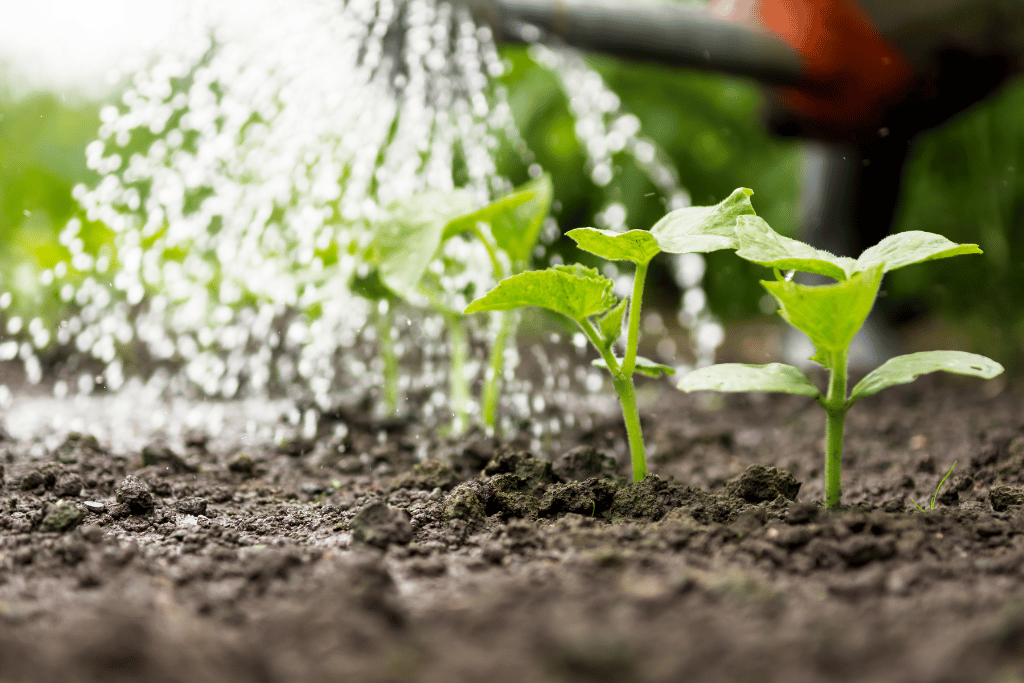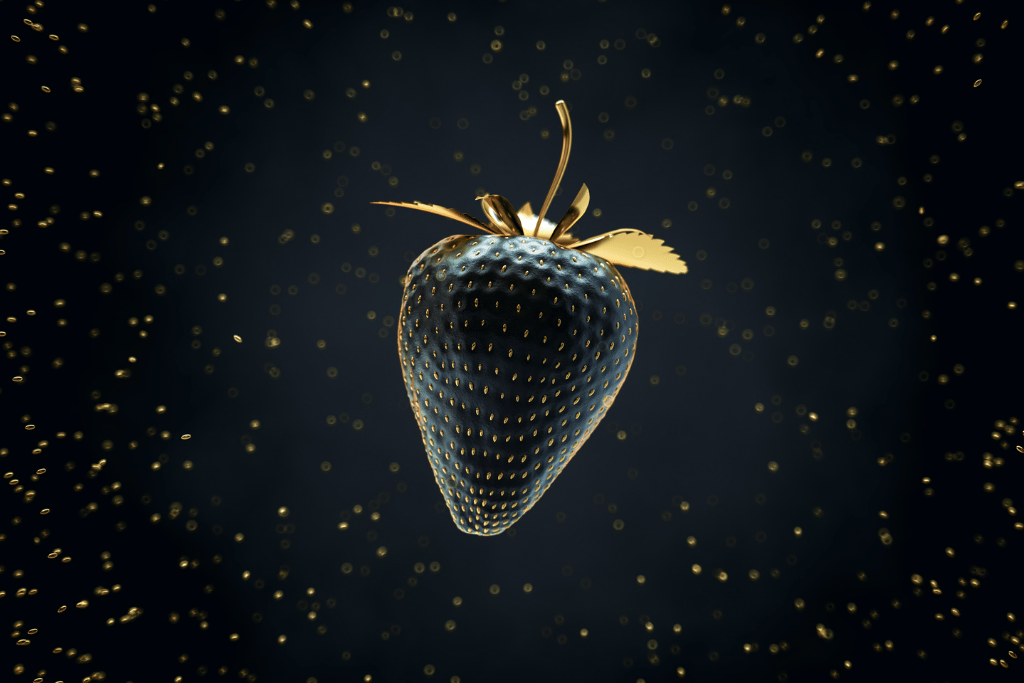
In the world of fruits, few things capture our imagination like the allure of a rare and unusual variety. The internet has become a breeding ground for curiosity, and one particular fruit has been at the center of many discussions: black strawberries.
Their unique color and supposed rarity have sparked countless debates and inquiries. But the question remains: Are black strawberries real?
Let’s peel back the layers of mystery surrounding black strawberries, from their origin and taste to the science behind their appearance.
What are Black Strawberries?
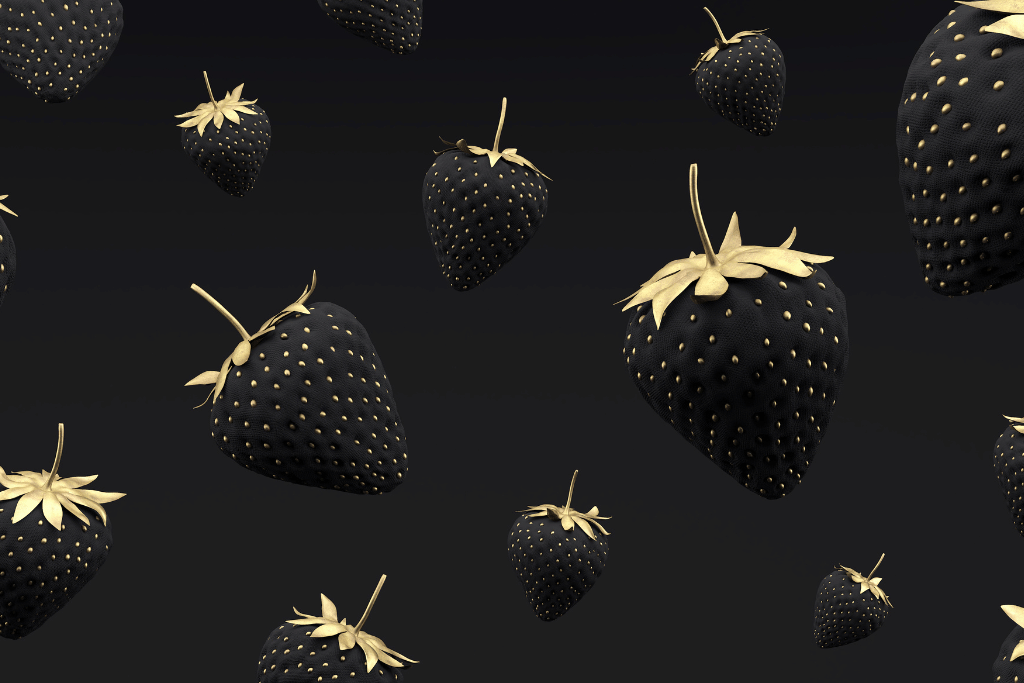
Before delving into the world of black strawberries, it’s important to address a common misconception. Many people believe that black strawberries are a real, distinct variety of fruit, but this is not entirely accurate.
The term “black strawberries” often refers to dark purple or burgundy strawberries that are mistakenly thought to be black. The origin of this misconception can be traced back to a piece of art that depicted strawberries with an almost black hue, perpetuating the idea that such a fruit exists.
Additionally, the recent emergence of online sellers offering “black strawberry seeds” has further fueled this misconception, leading many to wonder if black strawberries are indeed real.
Do Black Strawberries Exist?

The notion of black strawberries often conjures images of a rare and exotic fruit with a dark and mysterious appearance. However, this image is, in fact, a misconception. Black strawberries, as commonly understood, do not exist in nature. The idea of black strawberries has gained prominence due to artistic depictions and a misunderstanding of the natural characteristics of strawberries.
Origin of the Black Strawberry Image
The concept of black strawberries has roots in art and visual representation. Historical artworks and illustrations have depicted strawberries with an almost black hue, perpetuating the idea that such a fruit variety exists. These artistic interpretations, while captivating, do not accurately reflect the natural colors found in strawberries. Instead, they have contributed to the misconception and fascination surrounding black strawberries.
5 Most Common Questions Asked About Black Strawberries

Are black spots on strawberries safe to eat?
Black spots on strawberries are usually the result of bruising, mold, or natural discoloration due to overripening. In most cases, these spots are not harmful and can be safely cut away before consuming the rest of the strawberry. However, if the entire strawberry is covered in mold or has an off-putting odor, it’s best to discard it.
Is there such a thing as black strawberries?
No. Most of the sellers lure customers by putting up photoshopped images.
Are the black dots on strawberries bugs?
The black dots on strawberries are not bugs. They are most likely the result of fungal growth, such as mold. Mold can develop on strawberries if they are not stored properly or if they have been exposed to moisture. It’s a good practice to thoroughly inspect strawberries and discard any that show signs of mold or spoilage.
Why are my strawberries turning black?
Strawberries turning black can be caused by various factors, including bruising, fungal growth, overripening, or improper storage. To prevent this, make sure to handle strawberries gently, store them in a cool and dry place (preferably in the refrigerator), and consume them within a few days of purchase.
Where can you buy black strawberries?
Black strawberries do not naturally exist; they are often the result of deceptive practices where regular strawberries are painted black to create the illusion of a unique and rare fruit. These painted strawberries are not safe to eat, as the paint used could be harmful.
It’s important to be cautious when purchasing unusual or rare items online, especially when they seem too good to be true. Always buy from reputable sources and be wary of any products that appear suspicious or impossible.
Why is it Easier to Get Scammed for Black Strawberries?
The ease with which people can be scammed when it comes to “black” strawberries can be attributed to a combination of psychological factors and marketing tactics that scammers employ. Here are a few reasons why individuals might fall victim to scams involving black strawberries:
Desire for Rarity and Uniqueness: The human mind is naturally attracted to novelty and uniqueness. Scammers capitalize on this innate desire by presenting something that seems extraordinary and rare, like “black” strawberries. People may be more inclined to believe in and invest in something that appears to be one-of-a-kind, even if it defies common sense.
Limited Knowledge and Lack of Critical Thinking: Many people may not be aware that true black strawberries don’t exist in nature. Lack of knowledge about the natural characteristics of strawberries and their colors can make individuals more susceptible to believing in the possibility of such a fruit. Scammers exploit this lack of critical thinking by creating a narrative that appeals to people’s emotions rather than their rational judgment.
Visual Deception and Illusion: The dark purple or burgundy color of certain strawberries can create an illusion of blackness, especially under specific lighting conditions. Scammers may take advantage of this optical illusion to further deceive individuals into believing that they are indeed purchasing black strawberries.
Manipulative Marketing Techniques: Scammers are skilled at using persuasive marketing techniques to manipulate consumers. They may use attention-grabbing visuals, fake testimonials, and impressive-sounding claims to create an aura of legitimacy around their product. By employing these tactics, scammers create an environment where individuals are more likely to overlook logical inconsistencies and doubts.
Social Proof and Peer Influence: Scammers often employ strategies that leverage social proof, making it seem like many others have successfully purchased and enjoyed the product.
This can create a sense of FOMO (fear of missing out) and push individuals to make impulsive decisions without thoroughly researching or verifying the legitimacy of the product.
Emotional Appeal: Scammers often tap into people’s emotions, promising health benefits, exclusive experiences, or other positive outcomes associated with their product. When emotions come into play, individuals may be more willing to suspend their skepticism and make decisions based on hope and desire rather than logic.
To protect oneself from falling victim to scams involving “black” strawberries or any other fraudulent schemes, it’s crucial to exercise critical thinking, conduct thorough research, verify information from reliable sources, and remain cautious of offers that seem too good to be true.
Staying informed and developing a healthy skepticism can go a long way in preventing such scams.
Online Sellers Offering Black Strawberry Seeds – Are They Legit?

Imagine wanting to grow really cool black strawberries, but sadly, there are people who try to trick you with fake seeds. They show you pictures of these special seeds that can grow black, green, or brown strawberries, and they even show pictures of these berries that look real.
But here’s the trick: those pictures are fake, and it’s because of the tricky things people do on the Internet. See, strawberries take time to grow. They start with white flowers that turn into little green fruits. By the time you realize your strawberries are just regular red ones, the fake sellers have disappeared, and you’re left feeling fooled.
You know how there are different kinds of berries like cherries, blueberries, and blackberries? Well, people think black strawberries could be real too, especially since new kinds of fruits are made by mixing different ones together.
Unfortunately, not many people report when they get scammed because big online stores like eBay or Amazon don’t always do something about it. The tricky sellers can also hide and start again on new websites, so it’s hard to catch them.
And it’s not just about losing money. Getting tricked can make you feel really bad, and most people don’t want others to know they fell for a trick.
But don’t worry, there are good websites where you can find real strawberry seeds from trustworthy places. If someone is trying to sell you seeds for strawberries that are not red, white, or yellow, be careful! It’s probably a trick, and you don’t want to end up getting fooled by those sneaky scammers. It’s better to be safe and buy from places you can trust.
Caution Against Consuming Artificially Painted Black Strawberries
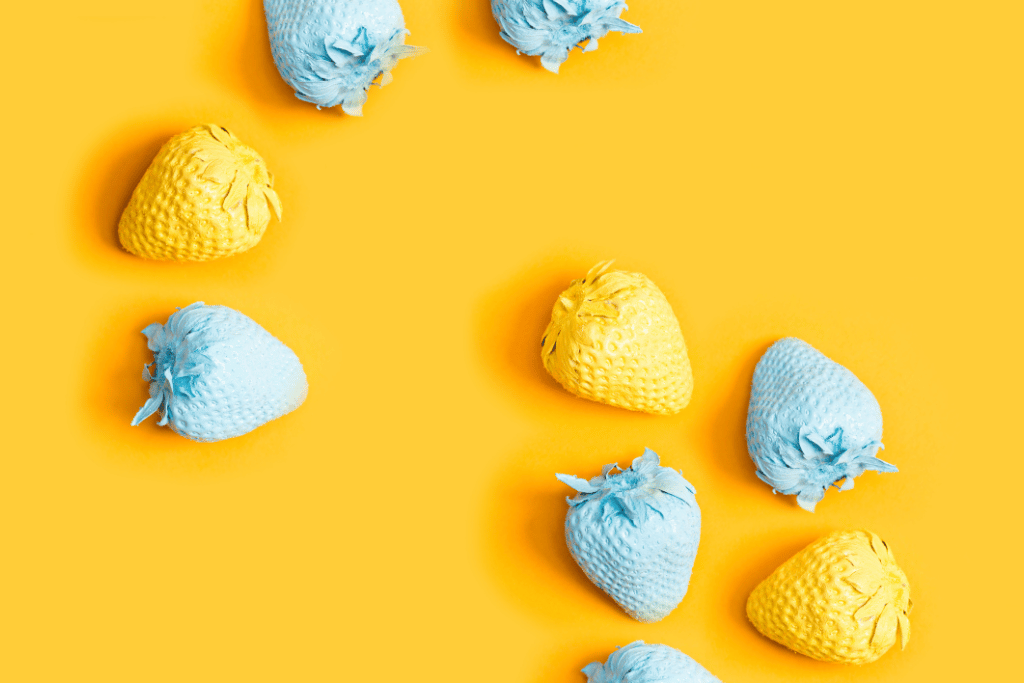
In the quest to satisfy the desire for black strawberries, some individuals have resorted to artificially painting strawberries to achieve the desired appearance. While the resulting “black” strawberries may visually resemble the elusive variety, consuming these artificially treated fruits can pose significant health risks. The use of non-food-safe dyes or paints can introduce harmful chemicals into the fruit, compromising its safety for consumption.
Separating Fact from Fiction
The fascination with black strawberries highlights the importance of seeking authenticity and reliable sources of information. While the allure of discovering a new and unique fruit variety is undeniable, it’s crucial to approach such claims with skepticism and critical thinking. As consumers, we have a responsibility to differentiate between artistic depictions, misconceptions, and verifiable facts when exploring the world of rare and exotic fruits.
What Do Black Strawberries Taste Like?
Speculation about the taste of black strawberries often runs rampant, fueled by the idea of experiencing something truly unique. However, it’s important to note that true black strawberries do not exist in nature. While some fruits, like blackberries and grapes, naturally exhibit dark colors, strawberries lack the genetic components to produce a black hue.
Caution should also be exercised when encountering artificially painted black strawberries, as these may not be safe for consumption. The use of potentially harmful dyes or paints can pose health risks, making it essential to avoid consuming such products.
What Are the Black Seeds On Strawberries?
To understand the significance of the black seeds on strawberries, it’s essential to delve into the anatomy of the fruit. Each strawberry is adorned with numerous tiny, dot-like structures embedded in its flesh, often referred to as seeds. These “seeds” are actually achenes, a type of dry fruit that contains a single seed encased in a hardened outer layer. The achenes are an integral part of the strawberry’s reproductive system, playing a vital role in the fruit’s development and propagation.
The Color of Strawberry Achenes: A Range of Possibilities
The color of strawberry achenes can vary widely, ranging from light tan to deep black. This variation is a result of genetic factors and natural pigments present in the fruit. While many strawberries exhibit achenes with a light tan color, some varieties showcase achenes that appear darker, often resembling shades of brown or black. It’s important to note that the color of the achenes does not impact the overall flavor or quality of the strawberry.
The Culprit Behind the Black Appearance
The presence of black achenes on strawberries is a natural occurrence and is not indicative of any defect or contamination. The dark coloration of these achenes is attributed to the accumulation of anthocyanins, a class of pigments responsible for the red, blue, and purple hues found in various fruits and vegetables. Anthocyanins are known for their antioxidant properties and are often associated with health benefits.
Anthocyanins: The Key Players in Coloration
Anthocyanins are water-soluble pigments that contribute to the vibrant colors seen in many fruits, including strawberries. These pigments are sensitive to changes in pH levels, which can influence their color spectrum. In strawberries, the presence of anthocyanins is more pronounced in the achenes, leading to the development of darker hues, including black.
The Intricate Role of Achenes in Reproduction
Beyond their visual appearance, achenes play a crucial role in the reproductive cycle of strawberries. Each achene contains a single seed, and collectively, they are responsible for producing new strawberry plants. When strawberries are consumed, the achenes are typically ingested along with the fruit. As the strawberries are digested, the achenes pass through the digestive system and are eventually excreted. In some cases, these excreted achenes may find their way to suitable soil environments, where they can potentially germinate and give rise to new strawberry plants.
Cultivating the Fascination: Black Seeds and Flavor Perception
The presence of black achenes on strawberries adds an intriguing dimension to the sensory experience of consuming this fruit. While the color of the achenes does not directly affect the taste of the strawberry itself, some individuals may associate the darker color with notions of ripeness and flavor intensity. This psychological connection between color and taste perception can enhance the overall enjoyment of strawberries, highlighting the complex interplay between visual cues and sensory experiences.
What are the Causes of Blackness in Strawberries?
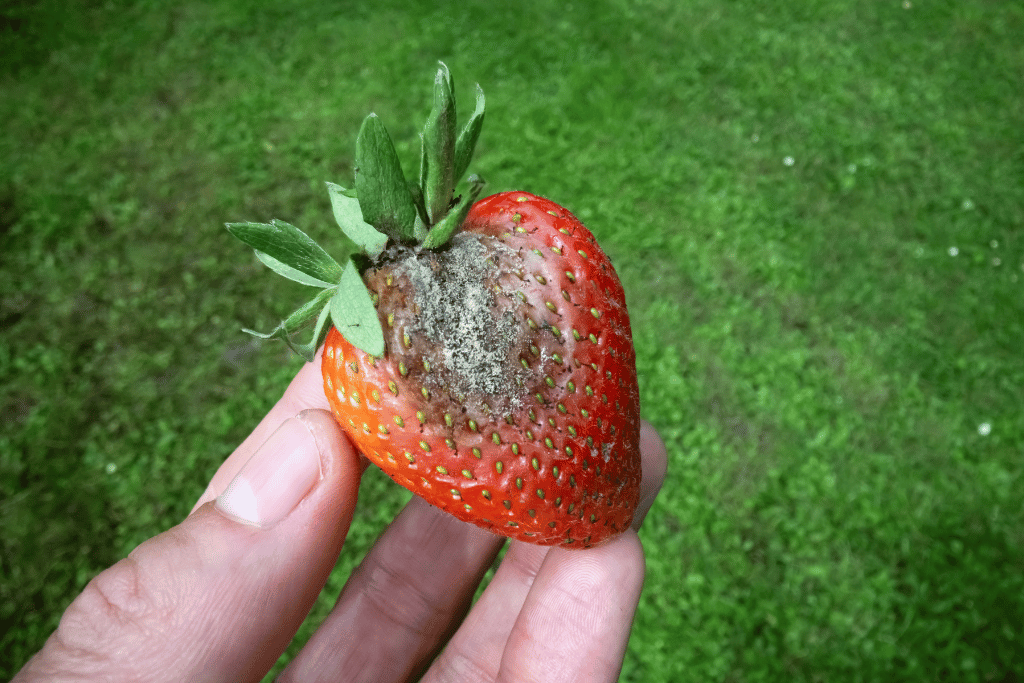
Strawberries, with their vibrant red hue and juicy appeal, can sometimes undergo an unfortunate transformation, leaving us with disheartening black spots and patches. Understanding the causes behind these unsightly blemishes is essential for both consumers and growers alike. In this section, we will delve into the various factors that contribute to the development of black spots on strawberries and explore the impact of fungal infection on the fruit’s texture and overall quality.
Fungal Infection: The Culprit Behind Black Spots
One of the primary culprits responsible for the appearance of black spots on strawberries is fungal infection. Fungi, including species like Botrytis cinerea (commonly known as gray mold), can thrive in humid and moist conditions. These fungi target not only the surface of the fruit but also penetrate deeper layers, leading to the formation of black patches.
Impact on Texture and Quality
Fungal infection can have a detrimental effect on the texture and quality of strawberries. As the fungi spread within the fruit, they break down cell walls and tissues, resulting in a mushy and unappetizing consistency. This compromised texture can render the strawberries unpalatable and undesirable for consumption. Additionally, the presence of black spots can lead to premature decay and spoilage, reducing the shelf life of the fruit and contributing to food waste.
Factors Contributing to Fungal Infection
Several factors contribute to the onset and proliferation of fungal infection in strawberries. By understanding these factors, growers can implement preventive measures to minimize the risk of black spots and maintain the overall health of their strawberry crops.
1. Excess Moisture: Excessive moisture, whether from rain, irrigation, or high humidity, creates an environment conducive to fungal growth. Moisture provides the necessary conditions for spores to germinate and spread, increasing the likelihood of fungal infection. Proper water management and drainage techniques are crucial to reducing moisture levels and preventing the onset of black spots.
2. Improper Handling: Improper handling during harvest, storage, and transportation can lead to physical damage to the fruit’s skin. These damaged areas provide entry points for fungal spores, allowing them to infiltrate the fruit and initiate infection. Gentle handling practices, along with careful packaging and storage, can significantly reduce the risk of introducing fungi to strawberries.
3. Insect Infestation: Insects, including mites and aphids, can inadvertently introduce fungal spores to strawberry plants. These spores can attach to the insects’ bodies and be transported from plant to plant as the insects feed. Integrated pest management strategies that focus on controlling insect populations can help mitigate the risk of fungal infection and subsequent black spots.
Preventing Blackness in Strawberries: Strategies for Growers

Maintaining the quality and appearance of strawberries requires a proactive approach to prevent the occurrence of black spots. Growers can implement a combination of cultural and management practices to reduce the risk of fungal infection and preserve the integrity of their strawberry crops.
1. Proper Spacing and Planting
Adequate spacing between strawberry plants is essential to promote air circulation and reduce humidity levels. Proper spacing minimizes the risk of moisture accumulation, which can contribute to fungal growth. Additionally, planting strawberries in raised beds can further improve drainage and reduce the likelihood of black spots.
2. Protection from Water and Cold
Providing protection from excessive water and cold temperatures is crucial in preventing fungal infection. Mulching around strawberry plants helps regulate soil moisture and temperature, creating an environment that is less favorable for fungal growth. Additionally, installing row covers or tunnels can provide a barrier against rain and cold, further safeguarding the crop.
3. Greenhouse Cultivation
Greenhouse cultivation offers an effective solution for minimizing the impact of external factors that contribute to fungal infection. Greenhouses provide controlled environments where humidity levels and temperature can be optimized to discourage fungal growth. This approach is particularly beneficial in regions prone to wet and humid conditions.
4. Swift Action for Fungal Rotting
Despite best efforts, fungal rotting may still occur in strawberry crops. When signs of fungal infection are detected, swift action is essential to mitigate the spread and salvage unaffected portions of the fruit. Infected strawberries should be promptly removed and disposed of to prevent spore dispersal. Application of appropriate fungicides may also be considered under the guidance of agricultural experts.
So, you see, the appearance of black spots on strawberries is primarily attributed to fungal infection, which thrives in conditions of excess moisture, improper handling, and insect infestation.
The impact of fungal infection extends beyond cosmetic concerns, affecting the texture and overall quality of the fruit. Growers can adopt a range of preventive measures, such as proper spacing and planting, protection from water and cold, and greenhouse cultivation, to minimize the risk of black spots.
Swift action in the face of fungal rotting is crucial to containing the issue and preserving the integrity of the crop. By understanding and addressing the causes of blackness in strawberries, we can continue to enjoy the luscious sweetness of this beloved fruit without compromising its quality.
Exploring Other Strawberry Colors
While black strawberries may be a product of imagination, the world of strawberries is far from limited. A diverse range of colors exists within the strawberry family, each with its own unique characteristics and benefits.
White Strawberries

White strawberries, for instance, are a captivating variety characterized by their lack of pigmentation. This absence of color is due to the absence of the Fra a1 protein responsible for red pigmentation. Despite their lack of visual appeal, white strawberries possess a delicate sweetness and offer a unique culinary experience. They can be used to add an unexpected twist to dishes and desserts, showcasing the versatility of this often-overlooked variety.
Yellow Strawberries
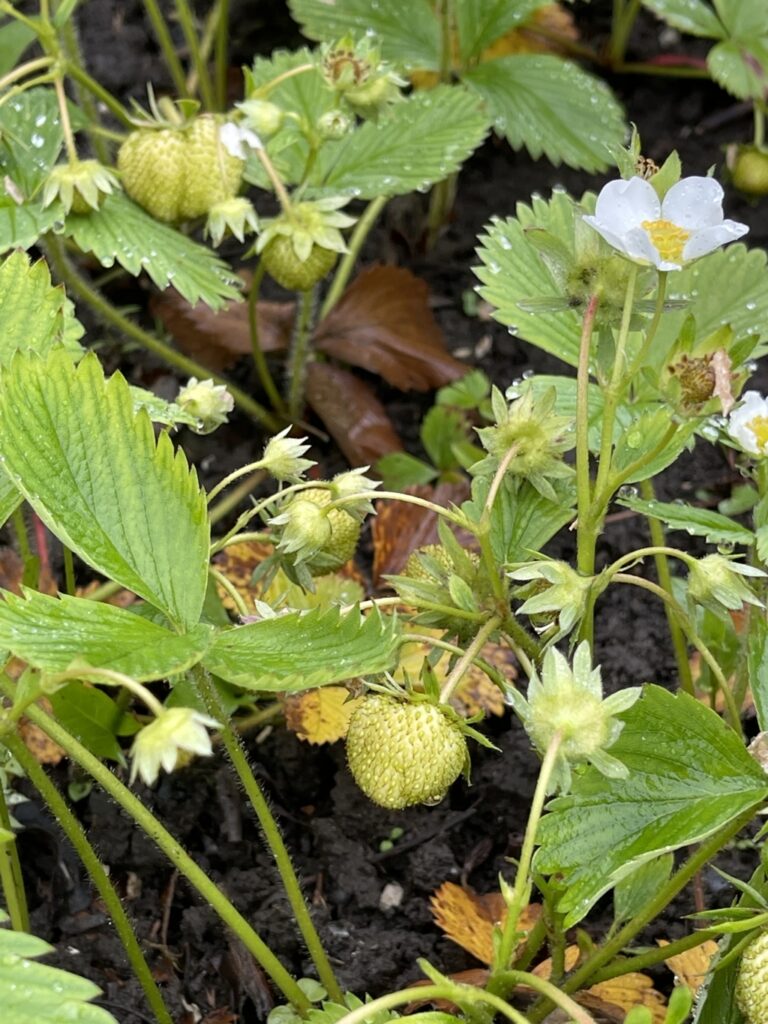
You can call them pineberries too! They are a prime example of the intrigue that different strawberry colors can evoke. With their pale yellow exterior and red seeds, pineberries resemble white strawberries with a twist. The flavor of pineberries is reminiscent of both strawberries and pineapples, creating a delightful fusion of taste sensations. This unique variety offers a truly memorable culinary experience and has gained popularity among adventurous food enthusiasts.
Red Strawberries
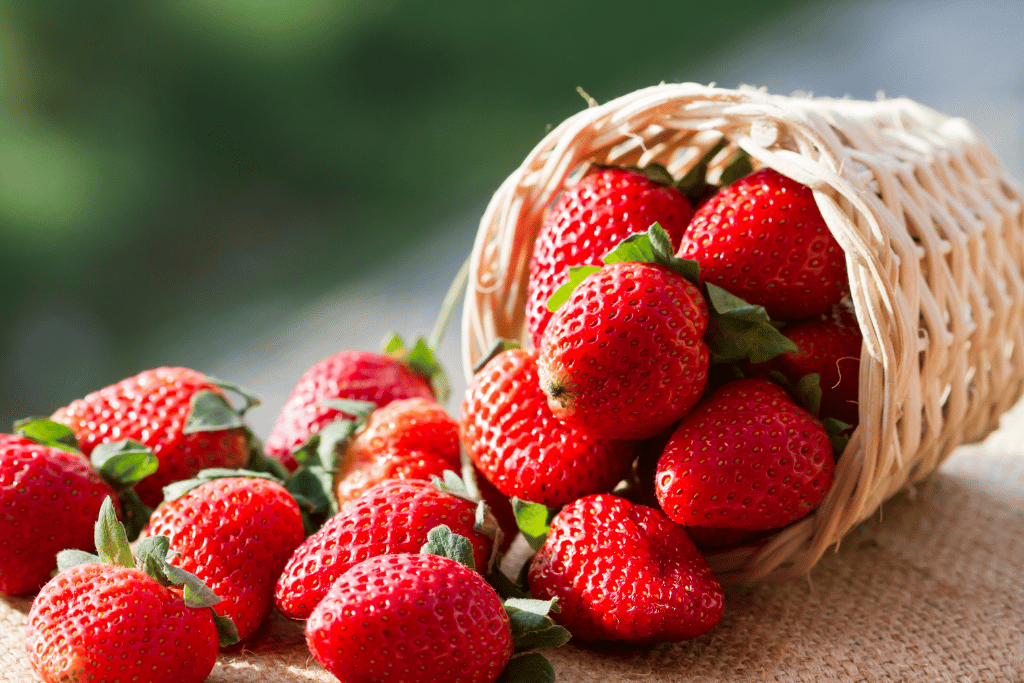
Of course, red strawberries remain the most widely recognized and consumed variety. With numerous cultivars available, red strawberries come in various shapes, sizes, and flavors. The “Alpine Fresca” variety, for example, has gained a reputation for its exceptional taste and is a popular choice for home gardeners. Its compact size and vibrant red color make it a delightful addition to both gardens and kitchen tables.
Purple Strawberries
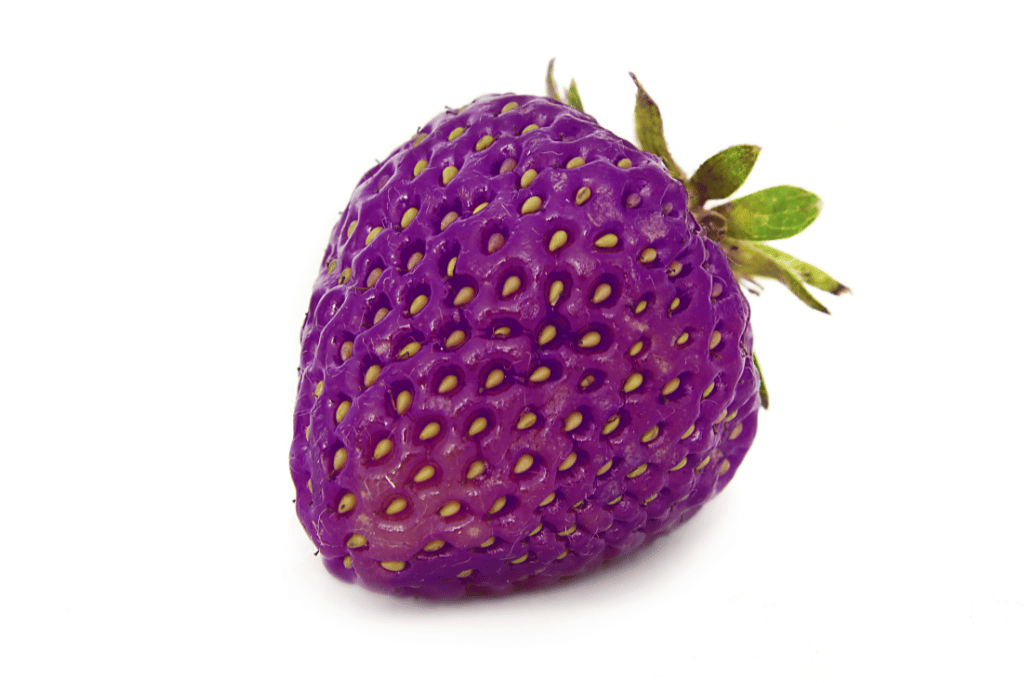
While not black, naturally cultivated purple strawberries do exist and are a testament to the diversity within the strawberry family. These unique berries showcase a range of purple shades, adding a pop of color to fruit salads and desserts. The rarity of purple strawberry seeds, however, makes them a sought-after commodity among gardeners and enthusiasts.
Beware of Seed Scammers: Protecting Yourself from Deceptive Practices

In an age where information and products are readily available at the click of a button, the allure of unique and rare items, such as exotic fruit seeds, has captured the attention of consumers and gardening enthusiasts alike.
Unfortunately, this growing demand has also given rise to a troubling phenomenon: seed scams. Unscrupulous sellers exploit the fascination with rare and hard-to-find seeds, offering enticing deals that often result in disappointment, frustration, and financial loss.
The Prevalence of Seed Scams
Seed scams have proliferated in recent years, taking advantage of the online marketplace and the eagerness of individuals to acquire unique plant varieties. These scams can encompass a wide range of deceptive practices, from selling fake or counterfeit seeds to misrepresenting the characteristics and benefits of certain plants. The allure of cultivating rare fruits, such as black strawberries, makes consumers particularly vulnerable to these scams.
Deceptive Offers and Fake Pictures
One of the most common tactics used by seed scammers is the creation of deceptive offers that promise access to unique and non-existent varieties, such as black strawberry seeds. These offers often come with alluring descriptions and vivid images that play on the desires of potential buyers. Scammers may showcase digitally altered or unrealistic images of fruits, creating an illusion of authenticity that draws unsuspecting customers in.
Challenges in Combating Scammers and Identity Verification
Identifying and combating seed scammers is a challenging endeavor. The anonymous nature of online transactions and the ability to create fake identities make it difficult to hold scammers accountable. Scammers may operate under multiple aliases, making it challenging for authorities to trace their activities. As a result, consumers must exercise vigilance and caution when navigating the online seed market.
How to Spot a Seed-Selling Scam
Protecting yourself from seed scams requires a combination of awareness, research, and critical thinking. By following these guidelines, you can enhance your ability to identify potential scams and make informed purchasing decisions:
1. Conduct Thorough Research
Before making a purchase, dedicate time to researching the seller or website offering the seeds. Look for customer reviews, ratings, and testimonials from reliable sources. Legitimate sellers will have a track record of positive feedback and satisfied customers.
2. Verify Authentic Images
Legitimate seed sellers will provide accurate and authentic images of their products. Be skeptical of overly perfect or digitally enhanced images that seem too good to be true. If the images appear unrealistic or are reused from other sources, it’s a red flag that the offer may be a scam.
3. Contact Information and Responsiveness
Reputable sellers will provide clear and accessible contact information, including a physical address, phone number, and email address. Reach out to the seller with any questions or concerns to gauge their responsiveness and professionalism. Scammers may avoid direct communication or provide vague responses.
4. Secure Payment Methods
Use secure payment methods that offer buyer protection, such as credit cards or trusted online payment platforms. Avoid making payments through unconventional methods or sharing sensitive financial information if the website or seller appears suspicious.
5. Rely on Trustworthy Sources
Purchase seeds from established and reputable sources, such as well-known nurseries, garden centers, or certified distributors. These sources have a reputation to uphold and are more likely to provide authentic and high-quality products.
6. Exercise Caution with Exclusive Offers
Be cautious of offers that claim to provide exclusive access to rare and unique varieties, especially if the claims are not supported by credible evidence or references. Scammers often rely on a sense of urgency and scarcity to pressure buyers into making hasty decisions.
7. Check for Transparency
Legitimate sellers will provide detailed information about the seeds they are offering, including their origin, cultivation requirements, and expected characteristics. Be skeptical of vague or incomplete descriptions that lack specific details about the seeds.
Conclusion
In the world of online commerce, seed scams represent a significant challenge for consumers seeking unique and authentic plant varieties. By staying informed, conducting thorough research, and practicing cautious purchasing habits, you can protect yourself from falling victim to deceptive practices.
The allure of cultivating rare and intriguing fruits, such as black strawberries, should not overshadow the importance of due diligence and critical thinking when making purchasing decisions.
By arming yourself with knowledge and skepticism, you can navigate the seed market safely and confidently, ensuring that your gardening endeavors are fueled by genuine and high-quality seeds.


